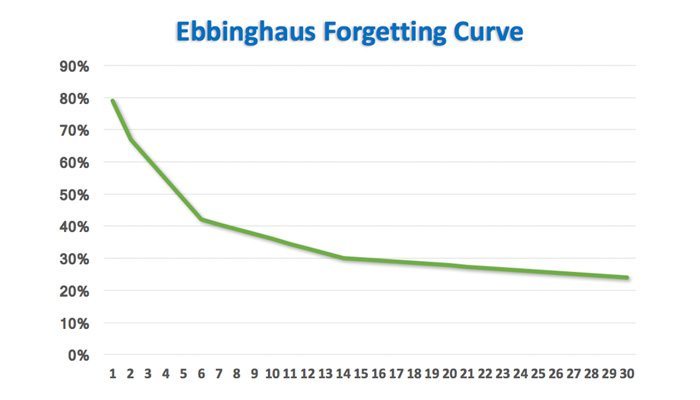Overcoming the Ebbinghaus Curve: techniques for making workplace communication stick
Fact: A month after you give employees important information, they’ve forgotten almost 80% of it, according to the “Ebbinghaus Forgetting Curve,” the result of a famous experiment first conducted in 1885 and reaffirmed in 2015.
Ebbinghaus realized that people forget information naturally because most information is non-essential, like which route you took to work last Wednesday or what you had for dinner yesterday. It’s just the way your brain works. Given new information, the average person forgets 42% of it after just 20 minutes. Within 24 hours, 67% is gone, and after a month 79% is forgotten. This is an obvious problem for managers who are trying to communicate effectively with employees.
The answer to this problem is repetition. Communication never ends, it just keeps iterating. Like a fast-food burger chain, you need to keep “advertising” an issue to employees if you want them to “buy” it.
A few guidelines on how to communicate a particular issue such as a safety tip or important deadline:
- Post the issue in a place where employees will see it several times a day, e.g., a wall-mounted display in a high-traffic area.
- Keep it short, about 10-20 words.
- Keep the notice up for 4-5 days. This cadence will ensure maximum absorption by employees. Then take it down so it doesn’t become clutter, obscuring new postings.
- If the issue is an ongoing one, post a new piece on the same subject but with a different look and feel (graphics, fonts, etc.).
While this is a simple and effective routine, many managers still have a problem doing it because it’s a process that goes on forever. So I suggest looking for a workplace communications system.
The Ebbinghaus Forgetting Curve is a real thing that we’re all susceptible to. If you need to get important stuff to your employees – and who doesn’t? – be sure to take it into account and communicate frequently.


